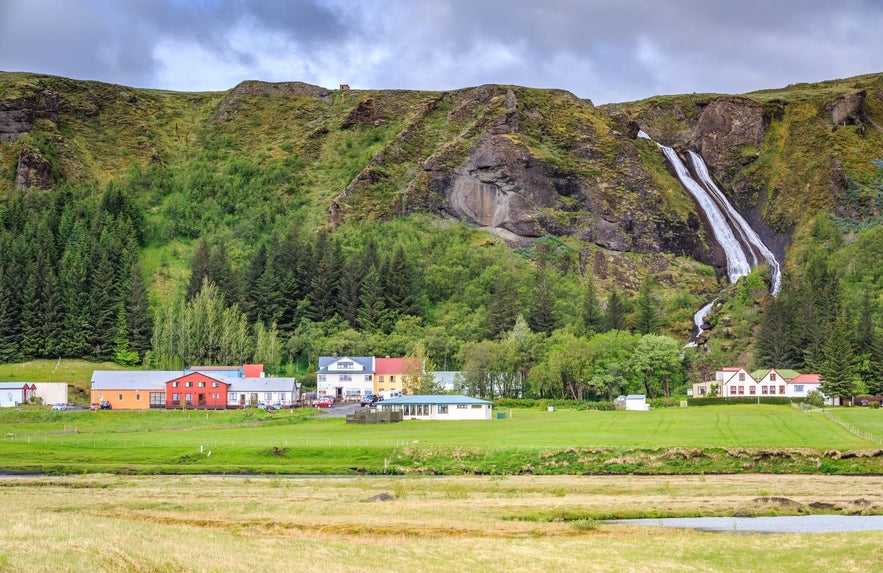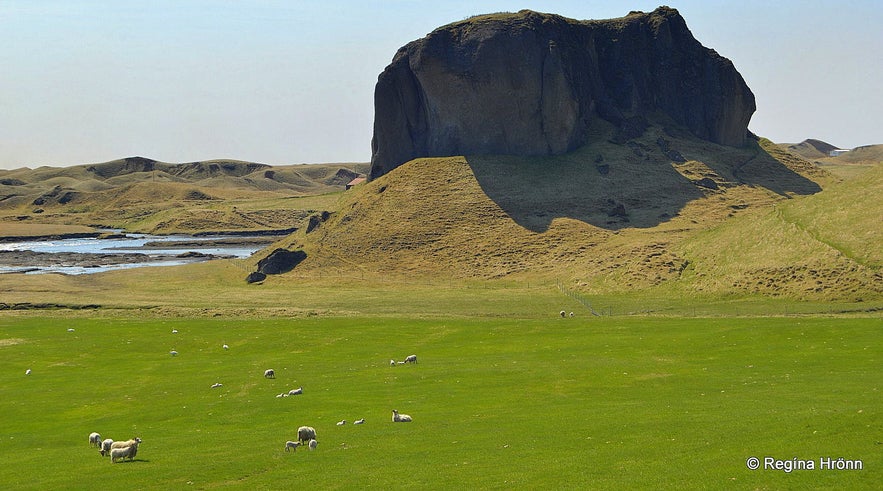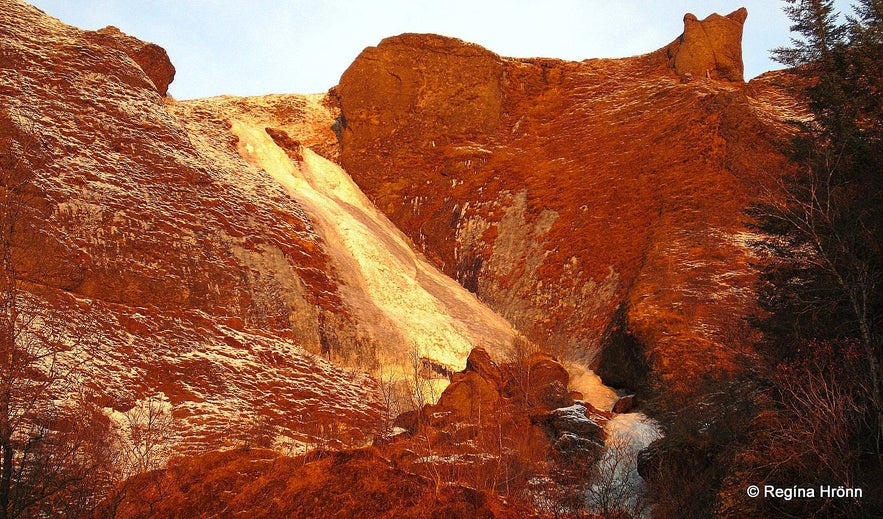
Odkryj to, co najlepsze w południowej Islandii podczas wycieczki po południowym wybrzeżu.
Położona przy obwodnicy między Vik i Myrdal i Hofn, około 250 km na wschód od Reykjaviku, Klaustur jest jedną z niewielu wiosek zapewniających udogodnienia, takie jak paliwo, restauracje, zakwaterowanie.
Dlaczego warto zaufać naszym treściom
Guide to Iceland to najbardziej zaufana platforma podróżnicza na Islandii, pomagająca milionom turystów każdego roku. Wszystkie nasze treści są pisane i recenzowane przez lokalnych ekspertów, którzy doskonale znają Islandię. Możesz polegać na nas, otrzymując dokładne, aktualne i wiarygodne porady podróżnicze.
Historia
 Autor zdjęcia: Regína Hrönn Ragnarsdóttir
Autor zdjęcia: Regína Hrönn Ragnarsdóttir
Historia Kirkjubaejarklaustur różni się pod wieloma względami od tradycyjnej islandzkiej osady. Uważa się, że „Papar”, islandzki tytuł dla podróżujących irlandzkich mnichów, zasiedlili ten obszar na długo przed pojawieniem się Norwegów.
Zgodnie z tą wersją, twierdzono, że poganie nie mogli postawić stopy w Klaustur, ponieważ był to obszar ściśle chrześcijański.
Historie przenikają się, a jedna z nich opowiada o poganinie Hildirze Eysteinssonie, który próbował przenieść się tam w X wieku. Po przekroczeniu granicy padł natychmiast martwy i został pochowany na sąsiednim wzgórzu, o nazwie Hildishaugur („Kopiec Hildira”).
Pomimo przekręcania nazwy „Kirkju-baejar-klaustur” dobrze oddaje historię tego obszaru: „Kirkju” oznacza kościół, „baejar” oznacza farmę, a „klaustur” oznacza klasztor.
Słowo „klaustur” zostało dodane do oryginalnej nazwy „Kirkjubaer” w 1186 r. n.e., kiedy to osiedlił się tam klasztor sióstr benedyktynek.
W ciągu 364 lat prowadzących do reformacji w 1550 r. Klaustur zrobił wiele dla przekazywanej ustnie historii południowej Islandii. Systrastapi („Skała Sióstr”), wodospad Systrafoss i jezioro Systravatn wzięły swoje nazwy właśnie od mieszkających tam zakonnic.
Legendy
 Autor zdjęcia: Regína Hrönn Ragnarsdóttir
Autor zdjęcia: Regína Hrönn Ragnarsdóttir
Historia związana z tymi miejscami jest bogata w opowieści o religijnej herezji, przesądach i śmierci.
Na przykład mówi się, że Skała Sióstr jest miejscem pochówku dwóch zakonnic straconych za grzeszne zachowanie. Zakonnice zostały oskarżone o różnego rodzaju zachowania, w tym zaprzedanie duszy diabłu, usunięcie chleba komunijnego z kościoła, cielesną relację z mężczyznami i bluźnierstwo wobec papieża.
Winne czy nie, zakonnice zostały szybko spalone na stosie.
Po reformacji jedna z zakonnic została uniewinniona za swoje czyny i mówi się, że na jej grobie wkrótce wyrosły kwiaty. Grób drugiej pozostał pusty, nieustannie przypominając o potępieniu.
Pobliskie atrakcje
Pomimo niewielkich rozmiarów, Klaustur jest ważnym przystankiem na trasie do atrakcji położonych w centrum wyspy, a mianowicie kraterów Laki w Parku Narodowym Vatnajokull i szlaków turystycznych Landmannalaugar w malowniczym rezerwacie przyrody Fjallabak. Zaledwie kilka kilometrów od samej wioski znajduje się spektakularny kanion Fjadrargljufur.
Krótki spacer na wschód od Kirkjubaejarklaustur zabierze Cię do fascynującego Kirkjugolfid „Podłogi Kościoła”, 80-metrowej bazaltowej platformy z kolumnami, ukształtowanej i uformowanej naturalnie przez przypływy oraz roztopy lodowcowe. Do wspomnianych wcześniej Skał Sióstr i Wodospadu Sióstr można również dojść pieszo z wioski.
Te trzy miejsca są mało znane, więc powinny być odwiedzane przez osoby unikające tłumów.
Ze względu na swoje położenie na południowym wybrzeżu, Klaustur jest miejscowością po drodze do laguny lodowcowej Jokulsarlon, rezerwatu przyrody Skaftafell lub jaskiń lodowcowych.









